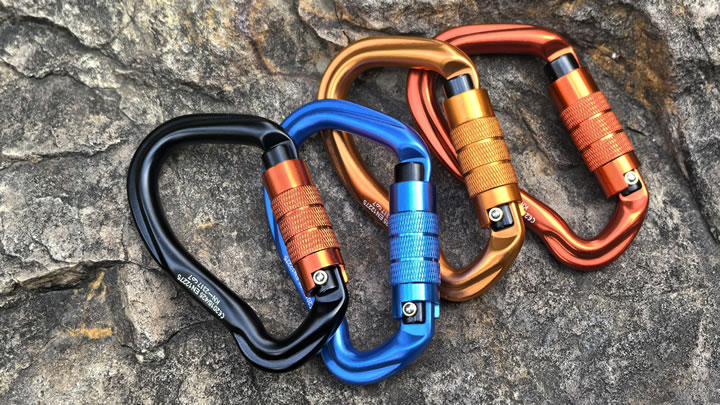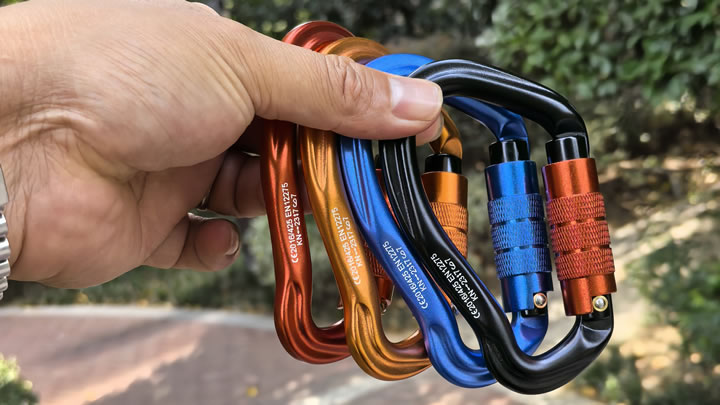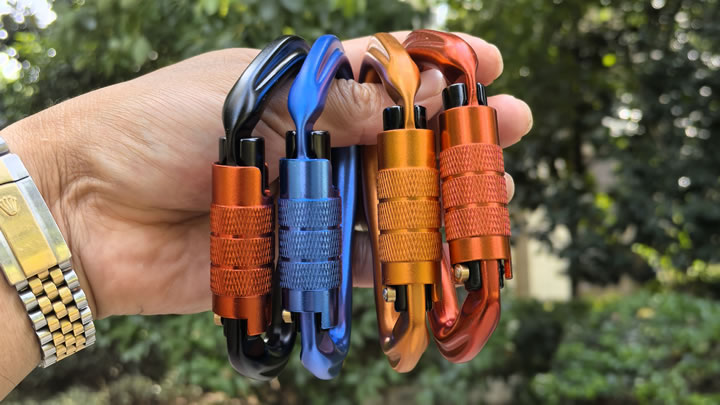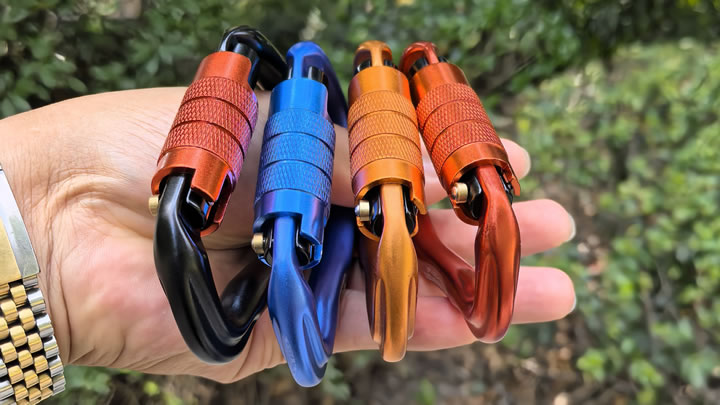How to wash waterproof hiking gear without damaging DWR?
When it comes to maintaining your waterproof hiking gear, proper washing is crucial to ensure its longevity and continued performance. The Durable Water Repellent (DWR) finish on your gear is what makes water bead up and roll off the surface, keeping you dry during hikes. However, this delicate coating can be easily damaged if not washed correctly. Here's a comprehensive guide on how to clean your waterproof hiking gear without harming the DWR.

Understanding DWR and Waterproof Gear
Before delving into the washing process, it's essential to understand how DWR works and the structure of waterproof hiking gear. DWR is a hydrophobic (water - repelling) coating applied to the outer layer of the fabric. It works by reducing the surface tension of the fabric, causing water to form droplets rather than being absorbed. This not only keeps the gear dry on the outside but also helps maintain the breathability of the fabric, allowing sweat vapor to escape.
Waterproof hiking gear, such as jackets and pants, often consists of multiple layers. There's an outer fabric layer, which is treated with DWR. Beneath this, there may be a waterproof membrane (like GORE - TEX, which is a type of expanded polytetrafluoroethylene or ePTFE membrane). This membrane has tiny pores that are large enough to allow water vapor (from sweat) to pass through but too small for liquid water to penetrate. Some gear also has an inner lining for comfort.
Pre - Washing Preparation
Remove Loose Dirt and Debris
Before washing, use a soft - bristle brush, such as an old toothbrush or a dedicated outdoor gear brush, to gently remove any loose dirt, mud, or debris from the surface of the gear. Pay extra attention to seams, zippers, and pockets where dirt can accumulate. This step is crucial as abrasive particles can scratch the fabric and the DWR coating during the washing process, accelerating its degradation.
Check for Damage
Inspect your gear for any signs of damage, such as tears, loose seams, or broken zippers. If you find any issues, it's a good idea to repair them before washing. Small tears can be mended using a repair kit specifically designed for outdoor gear. For loose seams, you can use a needle and thread or a fabric glue suitable for outdoor fabrics. Fixing these problems early can prevent further damage during the wash.
Washing Methods
Hand Washing
- Use Lukewarm Water: Fill a basin or sink with lukewarm water. Avoid using hot water as it can damage the fabric and the DWR coating. The ideal water temperature is around 30 - 40°C (86 - 104°F).
- Choose the Right Detergent: Select a mild, neutral detergent. Avoid using detergents that contain bleach, fabric softeners, or strong chemicals. There are also specialized outdoor gear detergents available in the market that are formulated to clean without harming the DWR. Add a small amount of detergent to the water and stir to dissolve it.
- Soak and Gently Scrub: Submerge the hiking gear in the soapy water and let it soak for about 10 - 15 minutes. This helps to loosen dirt and stains. Then, using a soft - bristle brush or a sponge, gently scrub the dirty areas. Be especially careful around seams and zippers. Avoid vigorous scrubbing as it can abrade the DWR coating.
- Rinse Thoroughly: After scrubbing, rinse the gear thoroughly with clean lukewarm water. Make sure to remove all traces of detergent. Residual detergent can build up on the fabric and affect the performance of the DWR.
- Machine Washing
- Select the Right Cycle: If you prefer to use a washing machine, choose a gentle or delicate cycle. This cycle has lower agitation and spin speeds, reducing the mechanical stress on the gear. Some high - end washing machines even have a specific "outdoor gear" or "waterproof fabric" cycle.
- Set the Temperature: As with hand washing, use lukewarm water. Set the water temperature to 30°C (86°F) to ensure the safety of the fabric and the DWR.
- Use a Mesh Bag: Place the hiking gear inside a mesh laundry bag. This provides an extra layer of protection, reducing the chances of the gear getting snagged or tangled during the wash cycle.
- Add Detergent Sparingly: Use a mild, neutral detergent. Measure the detergent carefully according to the manufacturer's instructions. Using too much detergent can leave residues that may impact the DWR.
- Drying Your Gear
- Air Drying
- Air drying is the best method for waterproof hiking gear. Hang the gear on a clothesline or a drying rack in a well - ventilated area. Avoid direct sunlight as prolonged exposure to UV rays can degrade the fabric and the DWR coating over time. If possible, turn the gear inside out to allow the inner layers to dry thoroughly as well.
- Avoid Heat Sources
- Do not use a dryer, iron, or any other heat source to dry your gear. High heat can melt the waterproof membrane and damage the DWR coating. Even the low - heat setting on a dryer can be too hot for some types of waterproof fabrics.
- Restoring DWR Performance
- Over time, with regular use and washing, the DWR coating on your hiking gear will start to wear off. You can tell if the DWR is losing its effectiveness when water no longer beads up on the fabric surface but instead starts to soak in. When this happens, you can restore the DWR using the following methods:
- Heat Activation
- Some DWR coatings can be re - activated by applying heat. After washing and air - drying your gear, you can tumble it in a dryer on a low - heat setting for about 10 - 15 minutes. This heat can help the DWR molecules re - orient themselves on the fabric surface, restoring some of the water - repellent properties. However, be cautious as not all fabrics can withstand even low - heat drying, so check the manufacturer's instructions first.
- DWR Spray or Wash - In Products
- There are also commercial DWR spray - on and wash - in products available. For spray - on products, make sure the gear is clean and dry. Hang the gear on a hanger in a well - ventilated area, preferably outdoors. Shake the DWR spray can well and then spray the product evenly over the entire surface of the gear, following the manufacturer's instructions on distance and application. Let the gear dry completely before using it.
- Wash - in DWR products are added to the washing machine during the rinse cycle. Follow the dosage instructions carefully. After the wash cycle is complete, air - dry the gear as usual. These products can effectively restore the DWR finish and extend the life of your waterproof hiking gear.
- General Maintenance Tips
- Wash Only When Necessary: Avoid washing your waterproof hiking gear too frequently. Excessive washing can accelerate the wear and tear of the DWR coating and the fabric. Only wash it when it is visibly dirty or has been exposed to substances that could damage the gear, such as saltwater or harsh chemicals.
- Store Properly: When not in use, store your gear in a cool, dry place away from direct sunlight. Avoid folding it in the same place repeatedly as this can cause creases that may weaken the fabric and the DWR coating over time. Hanging the gear on a wide - hanger is a good storage option.
- By following these steps, you can ensure that your waterproof hiking gear stays in top condition, with its DWR coating intact, providing you with reliable protection during your outdoor adventures. Remember, proper care and maintenance are key to getting the most out of your expensive hiking gear investment.






